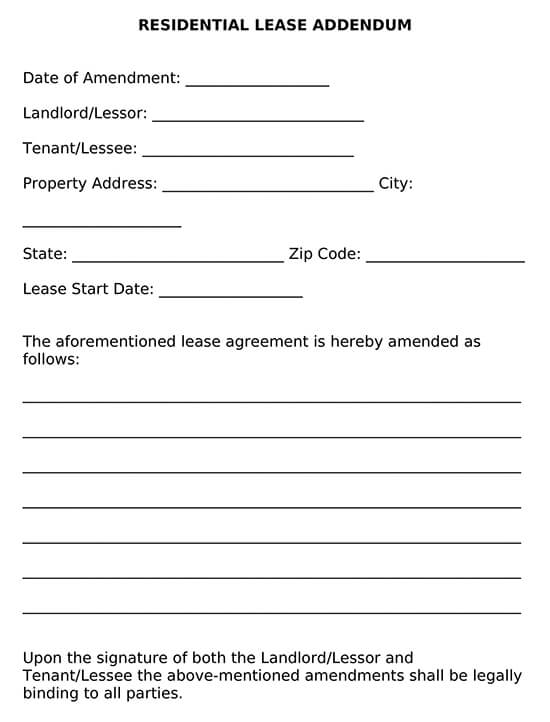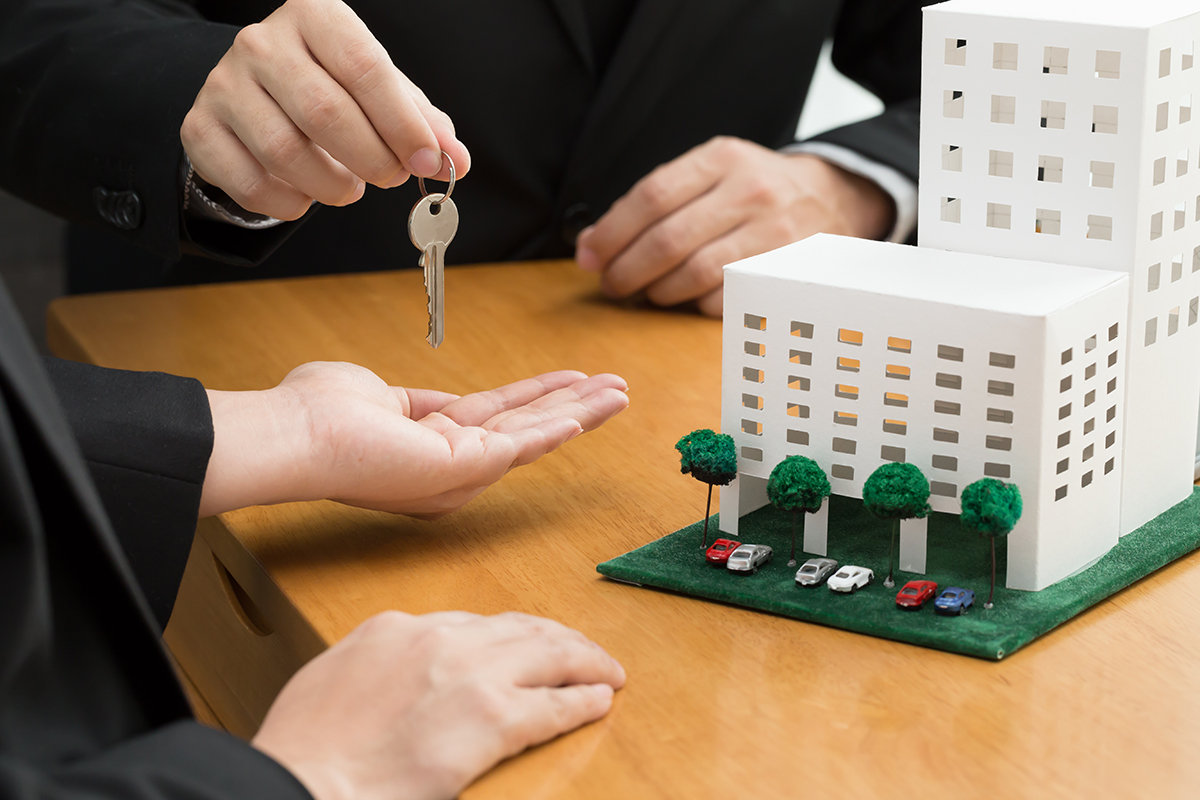When a tenant or landlord wants to make changes to the lease agreement without having to change the lease itself, they will use a lease addendum. A lease addendum is a document used to outline any prearranged modifications to the lease agreement. It is a legally binding document that gets attached to the original lease agreement and must be agreed upon and signed by both the landlord and tenant. In some states, a lease addendum is used for disclosure details.
What is a Residential Lease Addendum?
The addendum is used for residential properties and outlines additions made to an original lease agreement. Certain states require specific addendums to be added to a lease agreement. For example, New York, California, Arizona, and Maine require a Bed Bug Addendum, which lets tenants know if the property has had bed bugs and how to get rid of them should they return. The addendum is meant for general additions to a lease agreement and can be used by either the tenant or the landlord.
Free Template

How to Create a Residential Lease Addendum
Each addendum will vary, depending on what is needed. However, there are some key details that must be on the addendum:
- The date that the addendum was created
- The date of the original lease agreement
- Full name of the landlord
- Full name of the tenant
- The full address of the property being leased
Next, you will need to write a description of the amendment(s) that you will be adding to the lease. The last section of the lease addendum must include a clause that states both the tenant and the landlord agree to the changes/additions to the lease. For the addendum to be legally binding, both parties must sign and date the document. If there is more than one tenant renting the same property, you will need signatures from each one.
If there are several addendums, they should each be on a separate page, and each will need to be signed off by both parties. Copies should be made for both the tenant and the landlord. You may wish to have these signed before a notary public.
It’s important that you check the original lease agreement before writing an addendum. You need to be sure there is an addendum provision in the original lease that specifies when an addendum can be allowed, what they can cover, who is allowed to execute them, and how the addendum needs to be drafted.
Some leases may state that no addendums are allowed, which means you would have to create a new lease if you wish to implement changes. There may also be an outline on what types of addendum are allowable, such as for pets and visitors staying over, and those that are not allowed.
Conflicts between the addendum and the lease agreement
Your addendum should have a clause that outlines what will happen when there is conflicting information between the lease and the addendum. For example, it may state that, in the event of a conflict between the two documents, the addendum will control, or be considered first.
When is a Lease Addendum Needed?
A lease addendum is needed when issues arise that may not be clearly outlined in the original lease. Some common lease addendums include:
- Pets
- Renovations
- Smoking
- Lead paint
- Bed bugs
For example, a lease may say no pets are allowed, but a tenant may have a medical need for a pet, such as a service dog. The landlord would use a lease addendum that allows that tenant to have the pet but will outline any rules regarding keeping the pet on the premises.
Breaking Addendums
Just as you respect the rules of your lease agreement, so should you for addendums. If either the tenant or landlord breaches an addendum, it can be considered a breakable offense. This can result in the tenant being evicted, or a tenant being able to break the lease without being penalized if the landlord breaks the agreement.
Keep in mind that an addendum is a legally binding contract, and there are requirements needed to make it valid. Both parties must be competent, which means they are of legal age, are not mentally impaired, and are not under the influence of drugs or alcohol.
Benefits of Using a Lease Addendum
The purpose of the main lease agreement is to outline the responsibilities and rights of all parties, as well as give clear rules and terms. However, circumstances can arise over the course of a tenancy that requires additions to be made. Using a lease addendum gives both the tenant and the landlord the flexibility to make changes or exceptions to the original rules and terms. They can be used to address the specific needs of an individual tenant.
Frequently Asked Questions
An addendum is an addition to a lease. However, it is as legally binding as the lease agreement is.
An amendment is a change in the lease agreement itself, whereas an addendum is an addition to it.
Yes, as long as both parties agree to the conditions and terms of the addendum.
There is no limit to the number of addendums that can be added to a lease agreement. As long as both parties agree to them, all addendums are binding and acceptable.












